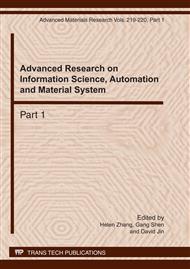p.1554
p.1558
p.1565
p.1569
p.1574
p.1578
p.1584
p.1589
p.1593
Hybrid Dynamic Principal Conponent Analysis Approach for Fault Detection in Steel Rolling Process
Abstract:
In traditional dynamic principal component analysis (DPCA) for fault detection, there are some drawbacks such as an excess of the number of principal components (PCs), low computational efficiency, etc. For dealing with the problem, this paper develops a hybrid dynamic principal component analysis (HDPCA) technique, this method can remove spacial and serial correlation by divide-and-conquer algorithm instead of parallel processing strategy, which can detect individual fault accurately and efficiently. The strip breaking fault in steel rolling process is used to demonstrate the improved performance of developed technique in comparison with traditional DPCA fault detection methods. It can be perceived that HDPCA algorithm has the better performance of fault detection and computational efficiency.
Info:
Periodical:
Pages:
1574-1577
Citation:
Online since:
March 2011
Authors:
Price:
Сopyright:
© 2011 Trans Tech Publications Ltd. All Rights Reserved
Share:
Citation:


